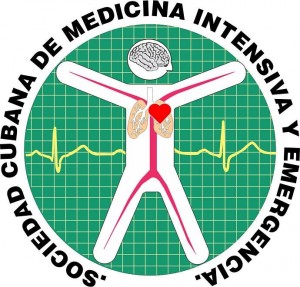Importancia de la respuesta inflamatoria en el perioperatorio y su modulación farmacológica
Palabras clave:
índice neutrófilo/linfocito, modulación farmacológica con lidocaína intravenosaResumen
Introducción: Durante el proceso quirúrgico del paciente oncológico se genera una respuesta inflamatoria en ocasiones descontrolada. Ello podría modificar el resultado posoperatorio.
Objetivo: Determinar la influencia de la respuesta inflamatoria en el resultado posoperatorio y los marcadores de mayor valor, así como la influencia de los medicamentos anestésicos en su modulación farmacológica.
Métodos: Se realizó la búsqueda de la bibliografía disponible de los últimos 10 años sobre el tema, a través de Medline, Clinical Key, Pubmed y Scopus. Se emplearon de inicio los filtros para revisar metaanálisis, revisiones sistemáticas y otros estudios de revisión.
Desarrollo: En el paciente con cáncer coinciden varios factores que desencadenan una respuesta inflamatoria. Esta ocasiona incremento de complicaciones posoperatorias y de recidiva tumoral. Existen varios marcadores que predicen esta respuesta; sin embargo, el índice neutrófilo/linfocito es el más factible y se le atribuye un elevado valor pronóstico cuando se eleva por encima de 5. Los fármacos anestésicos como la lidocaína intravenosa y algunas técnicas locorregionales permiten modular la respuesta inflamatoria.
Conclusiones: Los pacientes con índice neutrófilo/linfocito por encima de 5 tienen peores resultados posoperatorios y ello puede ser modulado con lidocaína intravenosa y el empleo siempre que sea posible de técnicas ahorradoras de opioides.
Descargas
Citas
1- MINSAP, Cuba. Anuario estadístico 2002. Incidencia de cáncer según principales localizaciones 1999-200
2- MINSAP, Cuba. Anuario estadístico 2008. Incidencia de cáncer según principales localizaciones y grupos de edades 2006
3- Kabbinavar E, Huwitz HI, Fehrenbacher L, Meropal NJ, Novotny WF, Lieberman G et al. Colorectalcancerfacts. J ClinOncol 2003; 21(1):60-5
4- AM Lacy, S Delgado, TC García Valdecasas, M Pera, J Visa. Cirugía laparoscópica en el tratamiento del cáncer colorectal. Cir Esp 2000; 68:350-4
5- Lacy MA, García Valdecasas JC, Delgado SC, Castells A, Taura P, Piqué JM, et al. Laparoscopic assisted colectomy versus open colectomy for treatment of non metastatic colon cancer: a randomized trial. Lancet 2002; 359:2224-9
6- Scala A, Huang A, Dowson HM, Rockall TA. Laparoscopic colorectal surgery results from 200 patientes. Colorectal Dis 2007 Oct; 9(8): 701-5
7- Proctor MJ, Morrison DS, Tallwar D, Balmer SM, O’Reilly DSJ, Foulis AK, et al. An inflammation-based prognostic score (mGPS) predicts canccer survival independent of tumor site: a Glasgow Inflammation Outcome Study. British Journal of Cancer. 2011; 104: 726-734
8- 1. Hall GM, Desborough JP: Interleukin-6 and the metabolic response to surgery. B J Anaest 1992, 69:337-338
9- 2. Irmingard K, Weiss M: Anesthetics and immune functions. CurrentOpinion in Anaesthesiology 2001, 14:685-689
10- 3. Desborough, JP. The stress response to trauma and surgery. Br. J. Anaesth. 2000, 85: 109-117
11- Beilin B, Shavit Y, Trabekin E, Mordashev B, Mayburd E, Zeidel A, Bessler H. The effects of postoperative pain management on immune response to surgery. AnesthAnalg. 2003, 97, 3: 822-7
12- Seo YJ, Jeong JH, Choi JY, Moon IS. Neutrophil-to-lymphocyte ratio and platelet-to-lymphocyte ratio: novel markers for diagnosis and prognosis in patients with idiopathic sudden sensorineural hearing loss. Dis Markers. 2014; 2014:1-6
13- M. A. López-González, A. Abrante-Jiménez, A. Gómez-Torres,E. Domínguez-Durán, F. Esteban Ortega. Implicaciones patogénicas de la reacción de fase aguda en sordera súbita idiopática. Revista Portuguesa de Otorrinolaringología e Cirugia Cervico Facial, Vol. 50, Nº 4, 2012
14- Cassinello, F. P. Cancer surgery: How may anesthesia imfluence outcome? J Clin Anesth .2015; 27: 262–272
15- Byrne K., Levins K. J, Buggy, D. J. Can anesthetic-analgesic technique during primary cancer surgery affect recurrence or metastasis? Anesthesiology.2015; 105: 660–664
16- Mammoto T, Higashiyama S, Mukai M, Mammoto A, Ayaki M, Mashimo T, et al. Infiltration anesthetic lidocaine inhibits cancer cell invasion by modulating ectodomain shedding of heparin-binding epidermal growth factor-like growth factor (HB-EGF). J Cell Physio.2017; 19(2):351–8
17- O’Riain SC, Buggy DJ, Kerin MJ, W. R. Inhibition of the stress response to breast cancer surgery by regional anesthesia and analgesia does not affect vascular endothelial growth factor and prostaglandin E2. Anesth Analg.2016; 100: 244–9
18- Li J, Jia Y, Cai C, Guan X, Li P, Xie Y. Predicting value of dynamic alteration of blood neutrophil/lymphocyte ratio on recurrence-free survival in patients with advanced colon cancer after operation and chemotherapy. Zhonghua Wei Chang Wai Ke Za Zhi. 2012; 15(11): 1171-4
19- Jankova L, Dent O, Chan C, Chapuis P, Clarke S. Preoperative neutrophil/lymphocyte ratio predicts overall survival but does not predict recurrence or cancer-specific survival after curative resection of nodepositive colorectal cancer. BMC Cancer. 2013; 13: 442
20- Chen Z, Raghav K, Lieu C, Jiang Z, Eng C, Vauthey J. Cytokine profile and prognostic significance of high neutrophil-lymphocyte ratio in colorectal cancer. Br J Cancer. 2017; 112(6): 1088-97
21- Dupré A, Malik H. Inflammation and cancer: What a surgical oncologist should know. Eur J Surg Oncol. 2018; 44(5): 566-70
22- Evans D, Fowler-Williams C. Is Volatile Anesthesia During Cancer Surgery Likely to Increase the Metastatic Risk? Int. Anesthesiol. Clin. 2016; 54:92–107
23- Izuo, M. Medical history: Seishu Hanaoka and his success in breast cancer surgery under general anesthesia two hundred years ago. Breast Cancer .2017; 11: 319–324
24- Xu J, Xu W, Zhu J. Propofol suppresses proliferation and invasion of glioma cells by upregulating microRNA-218 expression. Mol. Med. Rep. 2017;12 (4): 4815–4820
25- Peng Z, Zhang Y. Propofol inhibits proliferation and accelerates apoptosis of human gastric cancer cells by regulation of microRNA-451 and MMP-2 expression. Genet. Mol. Res. 2016; 1(5): 90-97
26- Xu Y. J. Effects of anaesthesia on proliferation, invasion and apoptosis of LoVo colon cancer cells in vitro. Anaesthesia. 2016; 71:147–54
27- Pei L. Ultrasound-Assisted Thoracic Paravertebral Block Reduces Intraoperative Opioid Requirement and Improves Analgesia after Breast Cancer Surgery: A Randomized, Controlled, Single-Center Trial. PLoS One.2015; 10: 142-249
28- Gupta K, Kshirsagar S. Morphine stimulates angiogenesis by activating proangiogenic and survival promoting signaling and promotes breast tumor growth. Cancer Res. 2017; 62(15): 4491–8
29- Singleton PA. Effect of perioperative opioids on cancer recurrence: a hypothesis. Futur. Oncol. 2017; 6 (8): 1237–42
30- Hollmann M W, Durieux M E. Local anesthetics and the inflammatory response: a new therapeutic indication? Anesthesiology.2017; 9(3): 858–875
31- Yanagi H, Sankawa H, Saito H I. Effect of lidocaine on histamine release and Ca2+ mobilization from mast cells and basophils. Acta Anaesthesiol Scand 2016; 40 (9):1138–44
32- Rimback G, Cassuto J, Wallin G. Inhibition of peritonitis by amide local anesthetics. Anesthesiology 2017; 69 (6): 881–6
33- Sakura S, B. Local anesthetic neurotoxicity does not result from blockade of voltage-gated sodium channels. Anesth Analg 2016; 81(2): 338–48
34- Li K, Yang J, Han X. Lidocaine sensitizes the cytotoxicity of cisplatin in breast cancer cells via up-regulation of RARbeta2 and RASSF1A demethylation. Int. J. Mol. Sci.2014; 15: 23519–23536
35. Johnson M. E, Uhl C. Mitochondrial injury and caspase activation by the local anesthetic lidocaine. Anesthesiology 2016; 10(1): 1184– 1194
36. Declaración de Helsinki. World medical association (asociación médica mundial). [actualizado 6 Feb 2010; citado 22 Oct 2020]. Disponible en: http://www.isciii.es/htdocs/terapia/documentos/declaracion_de_helsinki.pdf
37. Cassinello F, Prieto I, del Olmo M, Rivas S. Cancer surgery: how may anesthesia influence outcome? J. Clin. Anesth 2015; 27: 262–72
38. Melamed R, Bar-Yosef S. Suppression of natural killer cell activity and promotion of tumour metastasis by ketamine, thiopental, and halothane, but not by propofol: mediating mechanisms and prophylactic measures. Anesth Analg 2017; 2(1): 1331–9
39. Cata J. P, Gottumukkala V. How regional analgesia might reduce postoperative cancer recurrence. Eur. J. Pain Suppl. 2016; 5: 345–355
40. Hiller J, Brodner G, Gottschalk A. Understanding clinical strategies that may impact tumour growth and metastatic spread at the time of cancer surgery. Best Pract. Res. Clin. Anaesthesiol. 2017; 27: 427–439
41. Hutson, P, Backonja M, Knurr H. Intravenous Lidocaine for Neuropathic Pain: A retrospective analysis of tolerability and efficacy. Pain Medicine 2015; 16 (3) 531-536. Consultado en línea marzo 2020. Disponible en: https://oup.silverchaircdn.com/oup/backfile/Content_public/Journal/painmedicine/16/3/10.1111_pme.12642/2/16-3
42. Groetelaers RP, Berlo CL, Nijhuis PH, Schapers RF. Axillary recurrences after negative sentinel lymph node biopsy under local anaesthesia for breast cancer: a follow-up study after 5 years. Eur J Surg Oncol 2009; 35:159–163
43. Le Cras AE, Gallery HF. Spinal but not general anaesthesia increases the ratio of T helper 1 to T helper 2 cell subsets in patients undergoing transurethral resection of the prostate. Anesth Analg 2018; 87:1421–5
44. Sakaguchi M, Kuroda Y, H. The antiproliferative effect of lidocaine on human tongue cancer cells with inhibition of the activity of epidermal growth factor receptor. Anesth Analg 2016; 102 (4):1103–7
45. Marret E, Rolin M, Beaussier M, B. Meta analysis of intravenous lidocaine and postoperative recovery after abdominal surgery. Br J Surg.2016; 95 (11): 1331–8
46. Piegeler T, Votta-Velis EG, Liu G, Place AT, Schwartz DE, BeckSchimmer B, et al. Antimetastatic potential of amide-linked local anesthetics: Inhibition of lung adenocarcinoma cell migration and inflammatory Src signaling independent of sodium channel blockade. Anesthesiology. 2012; 117: 548-59
47. Fraser S, Foo I, Djamgoz M. Local anaesthetic use in cancer surgery and disease recurrence: Role of voltagegated sodium channels? Br J Anaesth. 2014; 113: 899-902
48. Chang Y, Liu CH, Chen M, Hsu Y, Chen S, Lin CH, et al. Local anesthetics induce apoptosis in human breast tumor cells. Anesth Analg. 2014; 118: 116-24
49. Sekandarzad MW, van Zundert AAJ, Lirk PB, Doonerbal CW, Hollmann MW. Perioperative anesthesia care and tumor progression. Anesth Analg. 2017; 124: 1697-708
50. Du W. Effect of neoadjuvant chemotherapy on sevoflurane MACBAR value of patients undergoing radical stomach carcinoma surgery. Int. J. Clin. Exp. Med.2016; 8: 5649–57
51. Hurmath F K, Mittal M, Ramaswamy P. Sevoflurane and thiopental preconditioning attenuates the migration and activity of MMP-2 in U87MG glioma cells. Neurochem. Int.2016; 9(4): 32–8






